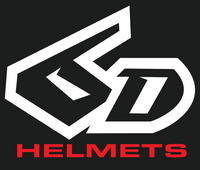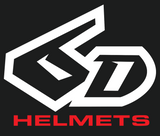Helmet Certifications
What are the standards?
MOTORCYCLE:
DOT: The U.S. Department of Transportation establishes the legal federal standard for motorcycle helmets used on public roads and property in the United States. Instead of "approving" helmets, the DOT mandates that helmet manufacturers certify each model sold in the US to meet the DOT standard. The current federal standard is FMVSS 218.
ECE: The Economic Commission for Europe sets this standard, which is widely used by most European nations. The current ECE standard is ECE 22.06
FIM: This is the most recent standard for motorcycle helmets used in professional motorcycle racing. The FIM test standards are established by the FÉDÉRATION INTERNATIONALE DE MOTOCYCLISME (FIM), the global governing body for professional motorcycle racing.
AS/NZS 1698:2006 is an Australian and New Zealand standard for motorcycle helmets. It sets safety requirements for design, construction, and performance. Helmets that comply with this standard provide reliable protection for motorcycle riders in these countries.
BICYCLE:
CPSC: The U.S. Consumer Product Safety Commission (CPSC) establishes the mandatory federal standard for bicycle helmets sold in the United States. The CPSC standard requires helmet manufacturers to meet specific safety requirements to provide protection during bicycle accidents.
ASTM: The American Society for Testing and Materials (ASTM) sets voluntary standards for bicycle helmets. These standards focus on impact protection and other safety factors. While compliance with ASTM standards is not mandatory, many manufacturers choose to meet these guidelines to ensure high-quality helmets.
EN 1078: This European standard, known as EN 1078, sets the requirements for bicycle helmets in Europe. It specifies performance and safety criteria that helmets must meet to provide effective protection to cyclists. Helmets bearing the EN 1078 mark indicate compliance with these standards.
AS/NZS 2063: Australian and New Zealand Standards (AS/NZS 2063) provide guidelines for bicycle helmets used in these countries. The standards outline the performance requirements and testing procedures that helmets must meet to be deemed safe and suitable for use.
NTA 8776: This is an E-bike safety standard developed by the Dutch specifically for helmets intended for e-bike riders. This standard addresses the need for enhanced protection considering the higher speeds at which e-bikes typically operate compared to standard pedal bikes.
Virginia Tech: Virginia Tech's Helmet Ratings is an independent testing program that evaluates bicycle helmet effectiveness. It provides a star rating system based on rigorous laboratory testing, helping consumers choose helmets that offer better protection against head injuries.
Certification FAQs
The Snell Memorial Foundation is a private non-profit organization that emerged after the tragic death of race car driver Pete Snell, with the goal of promoting and advancing helmet safety. While SNELL certification and testing are voluntary, they offer several notable benefits.
However, it's important to note that 6D does not certify helmets to the SNELL certification standard. This decision stems from one specific testing component that requires a double strike to a single location at an extremely high velocity. In 6D's perspective, passing this double strike test would necessitate a helmet shell that is overly stiff and rigid. Unfortunately, an excessively rigid shell can compromise the helmet's performance in real-life lower speed crash scenarios.
6D believes that the likelihood of experiencing a double impact to the exact same location at essentially equal velocities is relatively unlikely in a typical motorcycle crash scenario. Therefore, they prioritize other aspects of helmet design and testing to ensure optimal performance and safety in real-world situations.
Currently, the FIM standard certification is applicable only to the XS-M size range of ATS-1R street helmets. The helmet design and technology remain consistent across all sizes; however, 6D has opted to prioritize certification for the sizes that are more commonly utilized in racing bodies that specifically require the FIM standard. By doing so, 6D ensures that they allocate resources effectively while meeting the necessary standards for the intended racing applications.
To sell motorcycle helmets in the USA, manufacturers must ensure that their helmets meet certain safety standards set by the U.S. Department of Transportation (DOT).
The significant distinction between the two homologations lies in the number and location of impact points. Homologation 22.05 established 6 points of impact on the shell, while homologation 22.06 introduced an additional 12 points, significantly expanding the testing coverage.
Under the previous homologation, 22.05, an impact test was conducted at a speed of 7.5 m/s from a height of 3 meters.
In the updated homologation, there are now 3 impact tests at different speeds, replicating various impact scenarios in diverse contexts. The shell undergoes impacts from a weight dropped from a height of 4 meters at speeds of 8.2 m/s and 6 m/s. Additionally, the screen is subjected to impact testing and assessed for its resistance to fogging.
Another crucial disparity between the two homologations is the inclusion of a rotational impact test in the newer standard. This rotational impact simulation is considered one of the most rigorous and demanding tests to date.
In short, no. The ATR-2 and ATS-1R helmets, despite being newly certified to the 22.06 standard, have the same design and construction as the previous 22.05 models. The only difference is that the older models have been re-certified to meet the updated standard.
The NTA 8776 E-bike standard differs from regular bicycle standards in a few significant ways:
- Speed and Impact Protection: Regular bicycle standards focus on speeds up to 15 mph, while e-bikes can reach around 28 mph. NTA 8776 addresses the higher velocities and ensures helmets provide adequate protection at these increased speeds.
- Extended Coverage: NTA 8776 requires enhanced head protection, particularly at the temples and back of the head, which are more vulnerable during e-bike riding.
- Weight Considerations: NTA 8776 helmets weigh about the same as regular bicycle helmets, providing added protection without significant weight increase or discomfort.
The NTA 8776 E-bike standard addresses the specific safety needs of e-bike riders, considering higher speeds and providing additional coverage in critical areas. Manufacturers can design helmets tailored to these requirements, offering riders appropriate safety measures for their e-bike journeys.


 UK
UK
 EU
EU